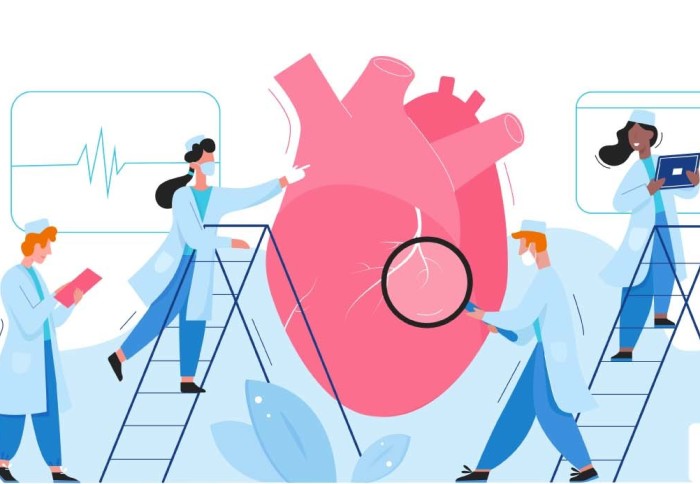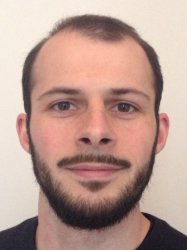

The 29 September is World Heart Day, providing the perfect opportunity to reflect on the work of NHLI’s cardiovascular researchers.
We at the National Heart and Lung Institute (NHLI), Imperial are proud to celebrate World Heart Day. Remarkably, cardiovascular disease is the foremost cause of death worldwide, taking an estimated 17.9 million lives each year, and can affect people of all ages. Our students, scientists and clinicians are world-leading and use cutting edge technologies in their mission to understand how the heart and blood vessels work and to discover new ways to diagnose and treat cardiovascular disease. Ultimately we hope to make a real world impact, for real people, in their day to day lives through our research.
Our approach is to combine innovative discoveries with translational cardiovascular research, where these new findings are implemented in hospitals and patient care. Work at NHLI includes world class clinical trials delivering clinical benefit in cardiology development, right through to use of new devices in hospitals for the diagnosis and management of cardiovascular disease. Our teams are studying genetics and fundamental mechanisms of cardiovascular disease, cardiovascular imaging, digital cardiology (including building apps for smart phones), omic technologies (including single cell transcriptomics) and cardiac stem cell platforms. Below is a snap shot from some of our early career researchers which illustrates the diversity of our research.
Blood vessels under attack from your own immune system
Our immune system is made up of multiple components, including cells and molecules found in the blood that work together in a finely orchestrated manner to protect our body against infection. Autoimmune diseases, such as rheumatoid arthritis and lupus, arise when our immune system attacks the body instead of protecting it. Blood vessels are particularly prone to injury from this type of immune attack. As a result, people with autoimmune conditions are more likely to suffer from severe cardiovascular complications such as heart attacks and strokes at a much younger age compared to the general population.
We study the immune processes through which blood vessel damage can occur. We do this by collecting biological information obtained from cells and molecules in patients’ blood and combining it with clinical information, such as blood vessel scans (angiograms), which can identify injury. This allows us to build a more complete picture of how and where vessel damage has occurred. Ultimately, we seek to use this knowledge to develop new tools and therapies to prevent cardiovascular complications and so improve patients’ health and quality of life.
Dr Charis Pericleous is a Versus Arthritis Career Development Fellow, based within the Vascular Science Section at NHLI.
Dr Robert Maughan is a Research Associate funded by the NIHR and Imperial BRC in NHLI's Vascular Science Section.
Going 3D to better study how heart disease works
My research focuses on a rare but fatal disease known as pulmonary arterial hypertension (PAH) – for which there is no cure. PAH is characterised by high blood pressure in the arteries of the lungs. Through my research I aim to discover more about this disease and to test new potential drugs which could be used to help patients. Currently I’m running experiments to try to reproduce the features of PAH in the laboratory using cells grown from human blood vessels.
My work involves activating an enzyme, which we know contributes to PAH in mice and rats, inside a particular type of cell and then investigating precisely how it may cause the disease. The more we learn about how this process happens, the closer we come to finding new and better treatments.
In addition I am also challenging how cells are generally used to study cardiovascular disease. In many laboratories, cells are grown in a single layer on a flat surface inside a plastic bottle or dish. However, this is not how many cells exist in the human body and therefore they behave very differently in tests carried out in the lab. I am developing a technique where certain cells are placed in a more appropriate three-dimensional setting which also allows them to be subjected to drug testing. I am hoping this will lead to the discovery of more effective drugs to tackle diseases such as pulmonary arterial hypertension.
Dr Adam Fellows is a Research Associate funded by the British Heart Foundation, and works in the Vascular Science Section in NHLI.
Understanding the heart one cell at a time
The heart keeps us alive by propelling blood through the body at each heartbeat. Its dynamic function depends on the exquisite, coordinated work of billions of cells. Imbalances in cardiac cell composition and changes of specific cell types are at the basis of cardiac disease, including heart attacks. A serious complication of heart attacks in surviving patients is heart failure (when the heart cannot pump blood effectively any more). Heart failure patients have a lower quality of life and life expectancy, with the only definitive treatment being heart transplantation, there is a need for new therapies.
Much remains to be understood about the cells that maintain the heart pumping and what happens in disease. My research is based on leading-edge technologies that allow us to deep dive into the heart to study one cell at the time and subsequently reconstruct the architecture of the healthy and diseased cardiac tissue. In a recent study we assembled a high-resolution human heart cell atlas, by accessing the genetic information within each single cell, we could untangle previously unknown cellular diversities of heart muscle cells, cardiac immune cells, and cells of the intricate network of blood vessels. We could then predict interactions between different cell types and create a reference to interpret changes caused by cardiac disease. My team is currently analysing failing hearts from a variety of causes using this same technology, aiming to be able to group hearts for future individual therapies. My vision is of a personalised medicine approach to improve the effectiveness of treatments for each heart failure patient.
This work is conducted with colleagues across the globe with a shared vision recognising the necessity of collaboration to achieve the best results for patients. Most importantly, this work can only be achieved thanks to the generosity and foresight of organ donors, patients and their families that donate unique and irreplaceable heart samples for research.
Dr Michela Noseda is a Lecturer of Cardiac Molecular Pathology with NHLI, based in the Cardiac Function Section.
Article text (excluding photos or graphics) © Imperial College London.
Photos and graphics subject to third party copyright used with permission or © Imperial College London.
Reporters

Dr Charis Pericleous
National Heart & Lung Institute

Contact details
Tel: +44 (0)20 7594 2728
Email: c.pericleous@imperial.ac.uk
Show all stories by this author

Michela Noseda
National Heart & Lung Institute

Contact details
Tel: +44 (0)20 7594 9496
Email: m.noseda@imperial.ac.uk
Show all stories by this author
Jane Mitchell
National Heart & Lung Institute

Contact details
Tel: +44 (0)20 7351 8137
Email: j.a.mitchell@imperial.ac.uk
Show all stories by this author

Adam Fellows
National Heart & Lung Institute

Contact details
Email: a.fellows@imperial.ac.uk
Show all stories by this author
Robert Maughan
Department of Immunology and Inflammation



